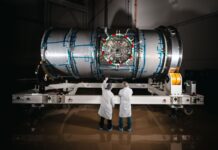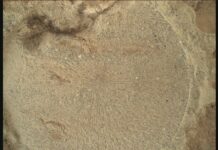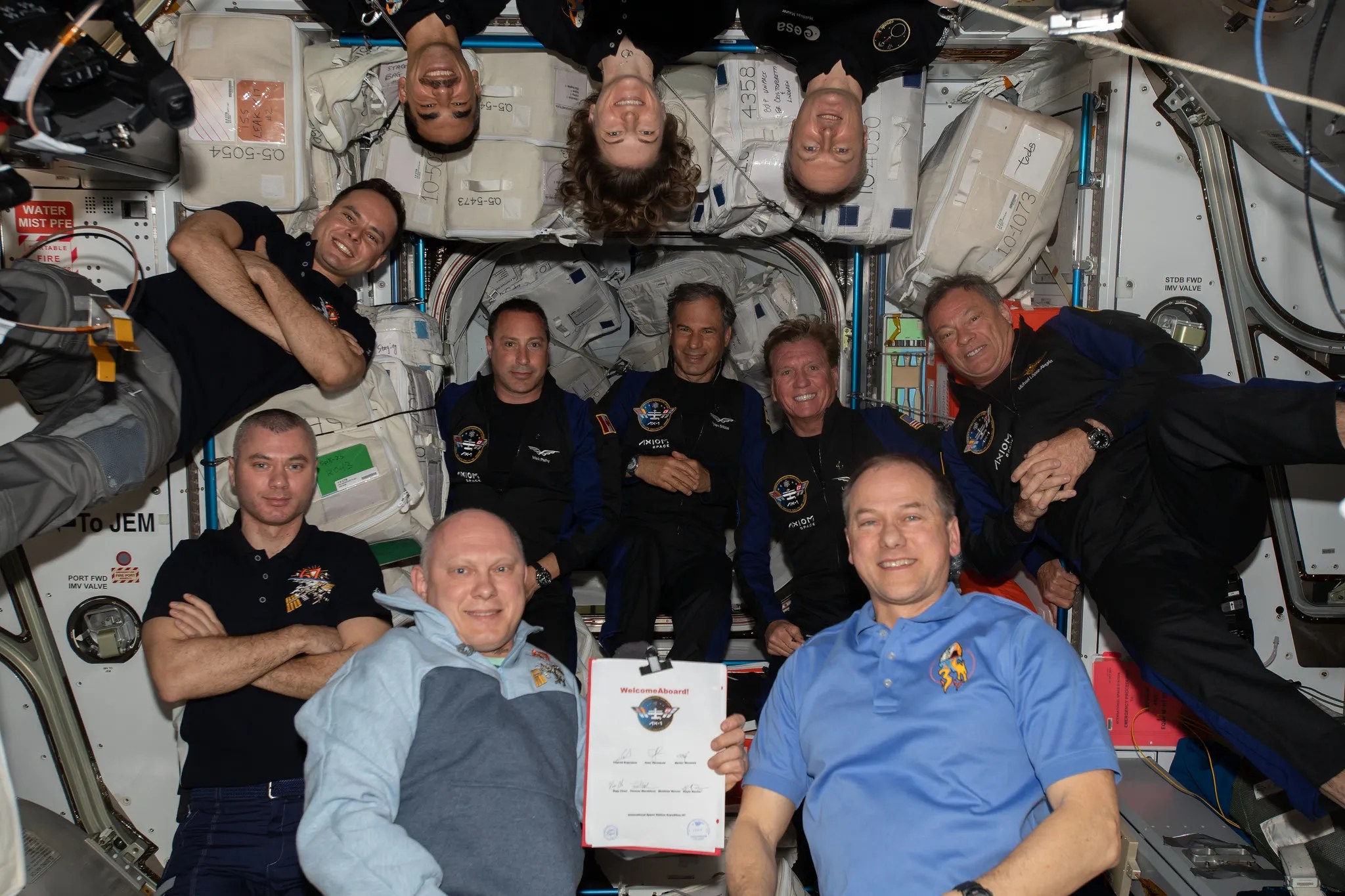Groundbreaking Research in Space: Enhancing Health and Manufacturing for Future Missions
In a recent study, researchers explored a novel treatment on cartilage and bone tissue cultures subjected to compressive impact injury. The study revealed intriguing differences in the metabolites and proteins released by cells in space compared to those on Earth, alongside partial improvements in both gravity conditions. These findings suggest that the treatment is safe and has the potential to enhance the health of astronauts on future missions, as well as patients on Earth.
Musculoskeletal injuries are common among astronauts, and joint injuries leading to post-traumatic osteoarthritis are a significant cause of disability across all age groups on Earth. The MVP Cell-06 experiment utilized cultures of human knee cartilage and bone cells from two donors to investigate the effects of spaceflight on musculoskeletal disease. The results of this study could pave the way for developing preventive measures and treatments for bone and cartilage degradation in astronauts and individuals on Earth following joint injuries.
Furthermore, NASA and Roscosmos researchers conducted a study on brazing aluminum-silicon material. They discovered that gravity had a moderate effect on small quantities of the alloy and a more pronounced impact on larger quantities. This finding could inform manufacturing techniques for future space missions.
The SUBSA-BRAINS experiment examined capillary flow, interface reactions, and bubble formation during the solidification of brazing alloys in microgravity. Brazing, a process that bonds similar and dissimilar materials at temperatures above 450°C, is a potential tool for construction, manufacturing, and repairing space vehicles and habitats. The insights gained from this study could be crucial for future space missions, where effective construction and repair techniques are essential.
In another study, researchers analyzed the pain experiences of two Axiom-1 astronauts. They discovered that spaceflight might affect sensory perception and regulation, a finding consistent with previous studies. The researchers recommend developing more sensitive measurement tools and questions that capture previous spaceflight experience and astronaut status (commercial or professional) to assess pain experiences accurately.
Astronauts often report pain during missions and after returning to Earth, particularly in the back and neck. The Microgravity Pain Sensation (Ax-1) experiment evaluated how short-term exposure to microgravity affects pain sensation, biomechanics, bone physiology, and the musculoskeletal system. The results suggested that spaceflight might impact various aspects of sensory perception and regulation, necessitating further investigation to develop countermeasures and treatments.
The 13th annual International Space Station Research and Development Conference (ISSRDC), sponsored by the ISS National Lab, brought together over 900 leaders in academia, industry, and government to discuss the space station’s role in future research and development. The event, held in Boston from July 30 to August 1, featured speakers such as Jinni Meehan, Assistant Director for Space Policy at the White House Office of Science and Technology Policy, NASA Associate Administrator Jim Free, NASA astronaut Stephen Bowen, and representatives from the International Space Station’s international and commercial partners.
Understanding the Technical Aspects
Cartilage and Bone Tissue Study
The MVP Cell-06 experiment focused on understanding how spaceflight affects musculoskeletal diseases. Researchers used cultures of human knee cartilage and bone cells from two donors. These cultures were subjected to compressive impact injury, a type of force that mimics the stresses bones and cartilage endure during physical activities or injuries. By comparing the metabolites and proteins released by these cells in space and on Earth, researchers observed partial improvements under both gravity conditions, suggesting the potential safety and effectiveness of this treatment.
Brazing Aluminum-Silicon Material
Brazing is a process that joins two metals by melting and flowing a filler metal into the joint. In the study conducted by NASA and Roscosmos, the focus was on an aluminum-silicon alloy. The researchers observed that gravity influenced the brazing process, with small quantities of the alloy being moderately affected, while larger quantities experienced more significant effects. This information is crucial for developing reliable manufacturing techniques for future space missions, where constructing and repairing equipment in microgravity will be essential.
SUBSA-BRAINS Experiment
The SUBSA-BRAINS experiment delved into the behavior of brazing alloys in microgravity. Capillary flow refers to the movement of liquid within small spaces without the assistance of external forces. Interface reactions are the interactions at the boundary between two different materials. Bubble formation during solidification can impact the integrity of the material. Understanding these phenomena in microgravity is vital for ensuring the success of brazing in space, which is key for constructing and maintaining space habitats and vehicles.
Pain Sensation Study
The Microgravity Pain Sensation (Ax-1) experiment assessed how short-term exposure to microgravity affects pain sensation, biomechanics (the study of the mechanical aspects of living organisms), bone physiology, and the musculoskeletal system. The findings suggested that spaceflight might alter sensory perception and regulation, highlighting the need for further research to develop effective countermeasures and treatments for astronauts experiencing pain during and after missions.
Implications for Future Space Missions
These studies collectively underscore the importance of understanding and mitigating the health risks associated with space travel. As humanity prepares for more extended missions to the Moon, Mars, and beyond, ensuring the health and well-being of astronauts becomes paramount. The insights gained from these experiments could lead to significant advancements in medical treatments and manufacturing techniques, both in space and on Earth.
Developing effective treatments for musculoskeletal injuries is crucial not only for astronauts but also for individuals on Earth who suffer from joint injuries and conditions like osteoarthritis. The ability to prevent and treat bone and cartilage degradation could significantly improve the quality of life for many people.
Moreover, the advancements in brazing techniques and the understanding of material behavior in microgravity will be instrumental in the construction and maintenance of space habitats and vehicles. Reliable manufacturing processes will be essential for the success of long-duration space missions.
Conclusion
The recent studies conducted by NASA and Roscosmos highlight the critical role of research in advancing our understanding of space-related health and manufacturing challenges. By addressing the unique conditions of space travel, these studies pave the way for developing effective treatments and techniques that can benefit both astronauts and people on Earth.
The findings from these experiments underscore the importance of continued research and collaboration among scientists, engineers, and medical professionals. As we venture further into space, ensuring the health and safety of astronauts will remain a top priority, and the knowledge gained from these studies will be invaluable in achieving that goal.
The annual International Space Station Research and Development Conference (ISSRDC) serves as a vital platform for sharing these groundbreaking discoveries and fostering collaboration among leaders in academia, industry, and government. The collective efforts of these stakeholders will be crucial in shaping the future of space exploration and ensuring the success of future missions.
For more Information, Refer to this article.

































